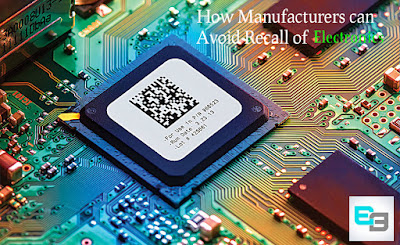The latest from CES, 2016
The Chinese company UAV came up with the latest phenomena to capture the skies with their latest human-sized drone perfect for a single person ride. The CES (consumer electronics show, 2016) had several electronic revelations enough to tempt even the best of electronic gadget-haters (if that breed exists). But the best out of all the devices that were shown on the first day of CES, 2016 was the human-size drone called EHang 184.
While this might sound like in the movie "Honey I shrunk the kids" only this time with you to ride drone being shrunk to a size of a Lego to fit inside a DJI machine. But that is not the case. You can fit into this drone without needing to be shrunk. This giant flying machine capable of turning all those boyhood dreams of flying into reality was sitting smack in the middle of the CES, 2016 drone section.
The company EHang was founded in the year 2014, and raised about USD 50 million in venture funding up to this date. Their view on this humungous drone is that this is the future of personal transport and most people were awestruck to find such epic possibilities and did not think of questioning the idea twice.
But many experts believe that this was just another smart marketing strategy for the company EHang to market their latest regular sized drones, like the Ghost. While we do not wish to dampen your expectations of buying this drone from Best Buy this year, but it is highly unlikely that this product will be available to be used as ones personal transport anytime soon.
While most of the employees of the company were not aware of the technical specifications of the drone and could not really answer about the MSRP on the release date of the device, but a press kit of the device did provide the reviewers with some insight on the drone specifications:
The best part about this drone will be the fact that it is designed to be totally automated. Hence, a rider would simply have to enter their destination and sit back and enjoy the ride without any form of control mid-flight. Thus, this will be helpful in adding to the safety of the device by eliminating the most dangerous part of accidents that occur with ordinary modes of personal transportation, i.e. human error. But this system also has a downside as the passengers will be completely helpless if anything should go wrong mid-flight. However, the company has assured the people that their company will employ numerous fail-safes to ensure complete safety during flights on the drone. There are features like multiple backups for every flight system and an option of allowing the airplane to land immediately if the passenger’s life is in danger.
In final thoughts, a bad news for fellow drone enthusiasts is the fact that there are still a few years to go before we can see this EHang 184 flying in the sky even if in a demo video. However, it is inspiring to see that a company is putting real thought into the future of the drone sector and producing awe-inspiring technology that can redefine our mundane daily commute to work in the distant future.
For latest news and electronic tutorials visit our website at Electodiction. We will make sure you get your daily dose of electronic info as we plan to keep you addicted to the digital world.
The Chinese company UAV came up with the latest phenomena to capture the skies with their latest human-sized drone perfect for a single person ride. The CES (consumer electronics show, 2016) had several electronic revelations enough to tempt even the best of electronic gadget-haters (if that breed exists). But the best out of all the devices that were shown on the first day of CES, 2016 was the human-size drone called EHang 184.
While this might sound like in the movie "Honey I shrunk the kids" only this time with you to ride drone being shrunk to a size of a Lego to fit inside a DJI machine. But that is not the case. You can fit into this drone without needing to be shrunk. This giant flying machine capable of turning all those boyhood dreams of flying into reality was sitting smack in the middle of the CES, 2016 drone section.
But many experts believe that this was just another smart marketing strategy for the company EHang to market their latest regular sized drones, like the Ghost. While we do not wish to dampen your expectations of buying this drone from Best Buy this year, but it is highly unlikely that this product will be available to be used as ones personal transport anytime soon.
While most of the employees of the company were not aware of the technical specifications of the drone and could not really answer about the MSRP on the release date of the device, but a press kit of the device did provide the reviewers with some insight on the drone specifications:
- The drone is about 4 and half feet tall
- It weighs around 440 pounds
- It will be capable of carrying 1 person for a ride for 23 minute
- The maximum speed that can be reached by the drone is 60 MPH
- The arms of the drone folds upwards
- It is fitted with gull-wing doors that add to super chic style of the drone
The best part about this drone will be the fact that it is designed to be totally automated. Hence, a rider would simply have to enter their destination and sit back and enjoy the ride without any form of control mid-flight. Thus, this will be helpful in adding to the safety of the device by eliminating the most dangerous part of accidents that occur with ordinary modes of personal transportation, i.e. human error. But this system also has a downside as the passengers will be completely helpless if anything should go wrong mid-flight. However, the company has assured the people that their company will employ numerous fail-safes to ensure complete safety during flights on the drone. There are features like multiple backups for every flight system and an option of allowing the airplane to land immediately if the passenger’s life is in danger.
In final thoughts, a bad news for fellow drone enthusiasts is the fact that there are still a few years to go before we can see this EHang 184 flying in the sky even if in a demo video. However, it is inspiring to see that a company is putting real thought into the future of the drone sector and producing awe-inspiring technology that can redefine our mundane daily commute to work in the distant future.
For latest news and electronic tutorials visit our website at Electodiction. We will make sure you get your daily dose of electronic info as we plan to keep you addicted to the digital world.
Related News






